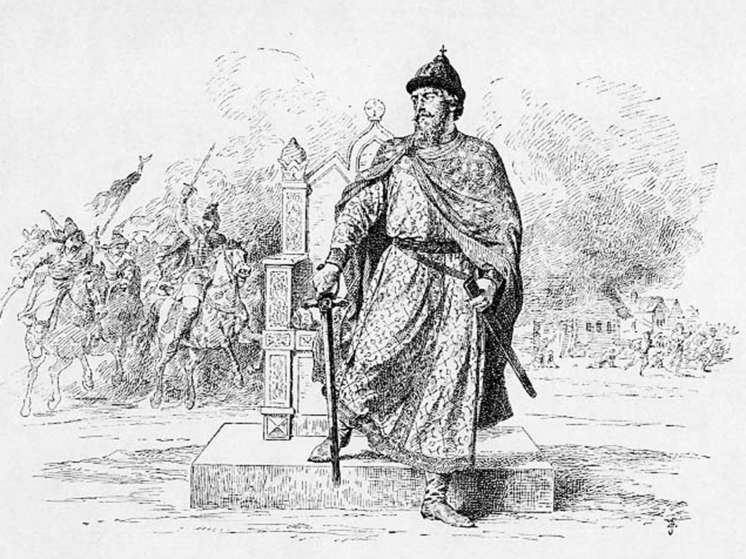And a possible relationship with the Scandinavians
The Rurikovichs also had Slavic and Scandinavian genes: this was shown by the first genome-wide study of the remains of a representative of this genus in the form of the remains of Alexander Nevsky’s son Dmitry Alexandrovich, conducted by Russian scientists .

The story of the study of the remains of Dmitry Alexandrovich began in connection with archaeological excavations in Pereslavl-Zalessky, where the remains of one of the four sons of Alexander Nevsky were buried in the Transfiguration Cathedral. The research report was published in the scientific press; specialists from the Federal Research Center “Fundamental Foundations of Biotechnology”, the Institute of Archeology of the Russian Academy of Sciences and other organizations took part in the work.
Representatives of the Rurik family ruled in Rus' from the 9th to the end of the 16th century. According to the Tale of Bygone Years, their ancestor was the Varangian Rurik, who was called to reign in 862. However, the previously found remains of ancient princes were almost impossible to identify.
Among the four sons of Alexander Nevsky — Vasily, Dmitry, Andrei and Daniil — it was Dmitry, who lived from 1250-1294, who most adopted his father’s military leadership talent. He inherited the Pereslavl-Zalessky principality from him, and was also the Grand Duke of Vladimir. Dmitry died at the age of 44 and was buried in the Transfiguration Cathedral of his principality. Thus, scientists had sufficient grounds to identify the remains found in the cathedral as the remains of the son of Alexander Nevsky.
DNA extraction from the skeletal remains of the prince was carried out in a specially equipped room (“clean room”) of the Federal Research Center of Biotechnology of the Russian Academy of Sciences, reports pcr.news. For this, the metacarpal bone, patella and navicular bone of the prince's foot were used.
It has been established that the Y chromosome isolated from the remains of Dmitry Alexandrovich belongs to the N1a haplogroup, which is present in the genomes of most modern Rurikovichs, whose genus dates back to the 11th century, from the reign of Prince Yaroslav the Wise. Among the prince's ancestors, according to geneticists, there could have been representatives of Scandinavian, Finno-Ugric, Slavic and steppe, nomadic peoples.
According to the article, the most likely distant ancestors of Prince Dmitry in the male line were men buried in the Bolshoi burial ground Oleniy Island on the coast of the Kola Peninsula, dated back 3600 years. This fact may indicate the relationship of the Rurikovichs with the Scandinavians, to whom this genetic line from the Kola Peninsula could later reach.
Geneticists also examined Dmitry Alexandrovich’s mitochondrial DNA, which he inherited from his mother. She belongs to haplogroup F1b1, which is found in Central Asia.
As one of the authors of the work, geneticist Vladimir Volkov, noted, the F1b1 group is more typical for the population of China and Central Asia (Mongolia, Kazakhstan, Kyrgyzstan, Uzbekistan). But it is precisely the line to which Dmitry Alexandrovich’s mother belonged (F1b1-a3a2a) that is also found among a group of modern Russians from the Bryansk, Kursk and Belgorod regions. Dmitry Alexandrovich’s Y chromosome also contains a marker that identifies the branch of Yuri Dolgoruky’s descendants.
As one of the authors of the work, paleoanthropologist Maria Dobrovolskaya, explained to MK, the presence of genes from many modern peoples in Dmitry Alexandrovich’s genome is most likely says that at that time these were just “bricks, from which entire communities were later formed.” Moreover, these bricks were most likely very similar to each other. As for the version about the more eastern origin of the prince’s mother, it may be based on the fact that among her distant ancestors on the female side there could have been representatives of Polovtsian or other peoples.
Currently, the studied remains of the son of Alexander Nevsky have been transferred for storage to the Institute of Archeology of the Russian Academy of Sciences. According to Dobrovolskaya, the scattered dry fragmented remains of the prince, which were once discovered in a destroyed sarcophagus, are now stored in cardboard boxes in conditions with constant temperature and humidity.


